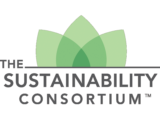The Sustainability Journey
Corporate sustainability leadership: the journey
Successful business leaders understand that a thriving economy depends on a thriving environment, and vice versa. Your customers, employees, suppliers, shareholders and potential investors are well aware that the myth of an “either/or” tradeoff between sustainability and profitability no longer exists. Now, more than ever, the world is your business.
Yet, while the need for corporate sustainability has long been proven, following a clear pathway to leadership — where your company’s business and sustainability goals are in alignment — can be challenging.
The Supply Chain Solutions Center roadmap to leadership can help you navigate that path.
Continue Reading

Featured Content
Report: Accelerating zero-emissions delivery
Report
Explore The Sustainability Journey
Sustainability 101
Sustainability needs to be weaved into your business, not bolted down. These resources will help you learn how to start the sustainability journey for your company.
View All Sustainability 101 ResourcesLevel 1: Engage
The genesis of your company’s commitment to corporate sustainability, this stage is about getting informed on the issues, understanding the landscape (both internally and externally), assessing your areas of opportunity and influence, and discovering where you need help (and how you can get it).
View All Level 1: Engage ResourcesLevel 2: Execute
This stage is about advancing and innovating across your company’s landscape — from your own operations to your suppliers'. It’s a multi-faceted process that ranges from building sustainability plans and proving the business case to implementing, measuring, reporting, scaling and beginning to take a public stand on issues and policies.
View All Level 2: Execute ResourcesLevel 3: Lead
Leading on corporate sustainability means bringing your company’s business and environmental goals into seamless, transparent alignment. You’re accelerating environmental innovation, actively advocating for smart environmental policies, and advancing sustainable business practices to alter the landscape across entire industries and business sectors.
View All Level 3: Lead ResourcesThe Sustainability Journey Resources
Filter by our "Sustainability 101" categories for a concise, high-level overview of Agriculture, Forests, Chemicals, Energy, Freight or Waste. You can also view all of the Engage (Level 1), Execute (Level 2) and Lead (Level 3) resources by filtering for interest areas that are relevant to your company.
Title
Date
Type
While chemicals in your supply chain expose your company to risk, here's a high-level overview of solutions you can explore.
02/24/2019
Guide
A high-level overview of current strategies for tackling toxic chemicals in your supply chain
02/24/2019
Guide
When pursuing a safer chemicals strategy, there are many stakeholders — both inside and outside of your company — that you may need or want to engage.
02/24/2019
Guide
Explore some of the organizations, initiatives, and advocacy groups that use corporate engagement and/or market activism to advance safer chemicals in consumer products.
02/24/2019
Guide
By going beyond one-off lighting upgrades and renewable projects to a comprehensive, strategic energy management program, your company can make energy sustainability part of its DNA.
02/24/2019
Guide
Gaining an understanding of the issues surrounding energy and environmental sustainability is the first step in reducing your company’s carbon footprint.
02/24/2019
Guide
Companies embarking on energy management have two main strategies at their disposal: energy efficiency and renewable energy.
02/24/2019
Guide
When reducing your company’s carbon footprint, there are many stakeholders — both inside and outside of your company — that you may need or want to engage.
02/24/2019
Guide
Reducing freight’s impact on greenhouse gas emissions is a major, long-term challenge for logistics professionals. Critical progress can be made, though, starting today.
02/24/2019
Guide
The first step to greening your freight transport is to understand the issue and how it impacts your business.
02/24/2019
Guide
There are many stakeholders — both inside and outside of your company — that you may need or want to engage.
02/24/2019
Guide
As much as 63 million tons of food is wasted in the U.S. each year. 52 million tons are sent to the landfill and 10 million tons are discarded or left unharvested, generating as much CO2 emissions as 212 million cars.
02/24/2019
Guide
Load More






















